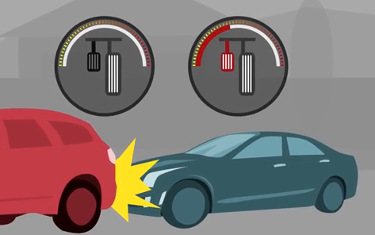 |
| March 22, 2016 | Volume 12 Issue 12 |
Designfax weekly eMagazine
Archives
Partners
Manufacturing Center
Product Spotlight
Modern Applications News
Metalworking Ideas For
Today's Job Shops
Tooling and Production
Strategies for large
metalworking plants
20 automakers commit to make automatic emergency braking standard on new vehicles
The U.S. Department of Transportation's National Highway Traffic Safety Administration (NHTSA) and the Insurance Institute for Highway Safety announced March 17 a historic commitment by 20 automakers representing more than 99 percent of the U.S. auto market to make automatic emergency braking (AEB) a standard feature on virtually all new cars no later than NHTSA's 2022 reporting year, which begins Sept. 1, 2022.

Automakers making the commitment are Audi, BMW, FCA US LLC, Ford, General Motors, Honda, Hyundai, Jaguar Land Rover, Kia, Maserati, Mazda, Mercedes-Benz, Mitsubishi Motors, Nissan, Porsche, Subaru, Tesla Motors Inc., Toyota, Volkswagen, and Volvo Car USA. The unprecedented commitment means that the safety technology will be available to more consumers more quickly than would be possible through the regulatory process.
AEB systems aim to help prevent crashes or reduce their severity by applying the brakes for the driver. The systems use on-vehicle sensors such as radar, cameras, or lasers to detect an imminent crash, warn the driver, and apply the brakes if the driver does not take sufficient action quickly enough.
NHTSA estimates that the agreement will make AEB standard on new cars three years faster than could be achieved through the formal regulatory process. During those three years, according to IIHS estimates, the commitment will prevent 28,000 crashes and 12,000 injuries.
"By proactively making emergency braking systems standard equipment on their vehicles, these 20 automakers will help prevent thousands of crashes and save lives," said U.S. Transportation Secretary Anthony Foxx. "It's a win for safety and a win for consumers."
Based on mounting evidence that AEB effectively reduced crashes and injuries in the United States and around the world, NHTSA and IIHS issued a challenge to industry in September 2015 to encourage automakers to voluntarily make AEB a standard feature. A series of meetings followed to establish details of the commitment.
"With roadway fatalities on the rise, the commitment made today has the potential to save more lives than almost anything else we can accomplish in the next six years," said Deborah A.P. Hersman, president and CEO of the National Safety Council, who attended the March 17 announcement. "Including all models in the agreement ensures that safety isn't for just those who can afford it."
NHTSA and IIHS also announced that Consumer Reports will assist in monitoring automaker progress toward meeting the AEB commitment. Jake Fisher, Director of Auto Testing for Consumer Reports, said, "We have been calling on automakers to make automatic emergency braking standard in all new vehicles, and today is an important step toward reaching that goal. This proven technology is among the most promising safety advances we've seen since electronic stability control almost two decades ago."
The commitment to automatic braking will make AEB standard on virtually all light-duty cars and trucks with a gross vehicle weight of 8,500 lb or less beginning no later than Sept. 1, 2022. AEB will be standard on virtually all trucks with a gross vehicle weight between 8,501 lb and 10,000 lb beginning no later than Sept. 1, 2025.
NHTSA will track the progress industry is making toward its commitment.
The commitment takes into account the evolution of AEB technology. It requires a level of functionality that is in line with research and crash data demonstrating that such systems are substantially reducing crashes, but does not stand in the way of improved capabilities that are just beginning to emerge. The performance measures are based on real-world data showing that vehicles with this level of capability are avoiding crashes.
To encourage further development of AEB technology, NHTSA will accelerate its research on more advanced AEB applications, including systems that reduce the risk of collisions with pedestrians. In December, NHTSA announced plans to rate AEB systems and other advanced technologies under its 5-Star Safety Ratings beginning in model year 2018.
Source: NHTSA
Published March 2016
Rate this article
View our terms of use and privacy policy
